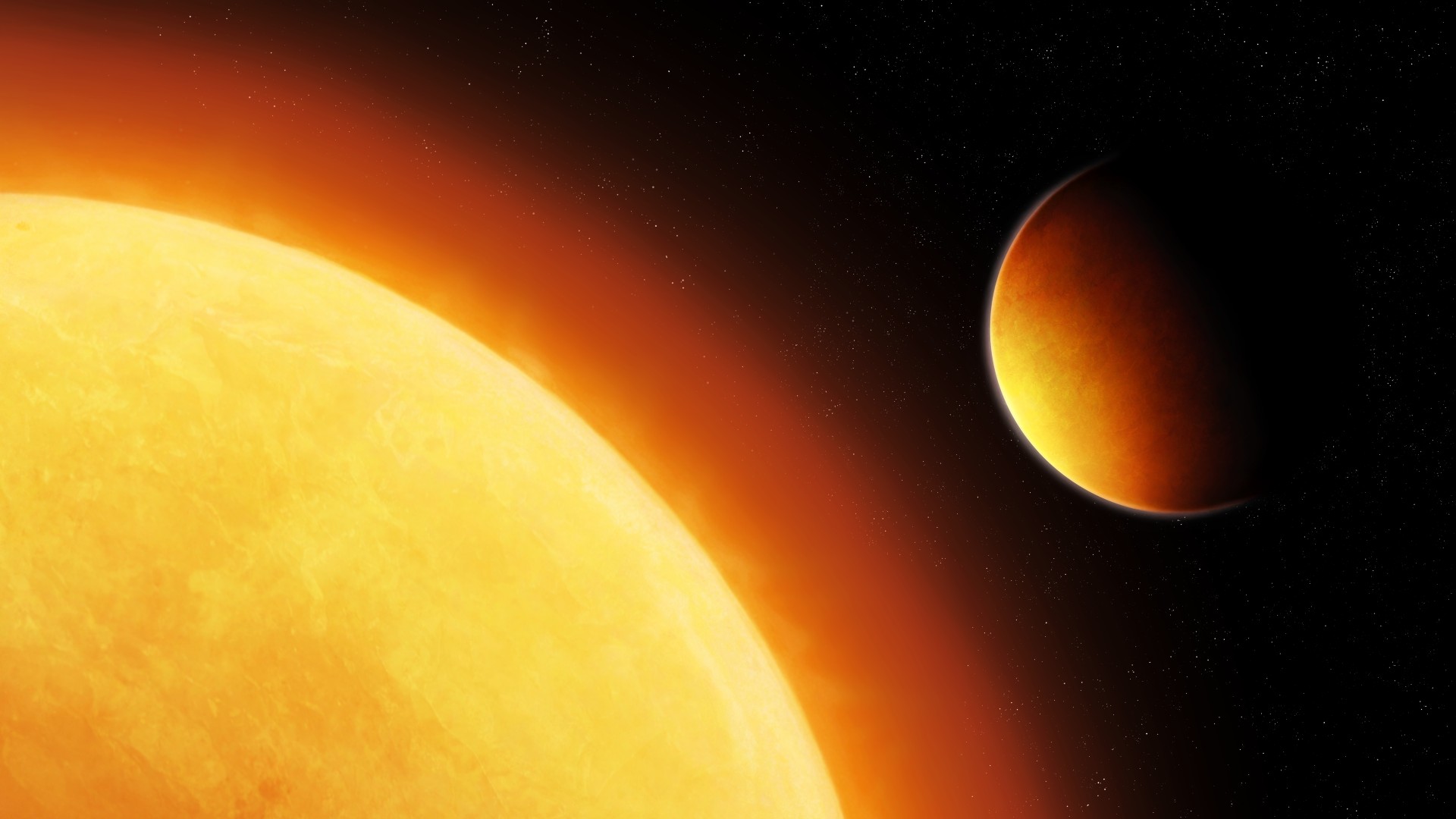Mysterious flare a trillion times brighter than our sun could be a 'disc inferno' ripping a baby planet apart
The flare created by the young star is trillions of times more powerful than a solar flare and has been blazing for 85 years.

A massive stellar flare trillions of times more powerful than the brightest solar flare from our sun may have been caused when a star ripped apart and devoured a massive gas giant planet.
New research could solve the mystery of why the infant protostar FU Ori, located 1,200 light-years from Earth, significantly increased in brightness around 85 years ago and has still not dimmed to its expected luminosity. Astronomers have theorized that the increase in brightness of FU Ori is the result of matter being fed from a disk of superhot gas and dust around the young star to its surface.
A simulation created by a team at the University of Leicester suggested the extraordinarily energetic event was caused when a planet ten times the size of Jupiter ventured too close to the growing star. This resulted in this super-Jupiter undergoing what the team called an "extreme evaporation," burning up in a superheated soup of material swirling around the star. Some of the remains of the planet were then fed to the star.
"We discovered a new process which you might call a 'disc inferno' of young planets," University of Leicester School of Physics and Astronomy professor Sergei Nayakshin said in a statement.
Related: Black hole shreds star in a cosmic feeding frenzy that has astronomers thrilled
Nayakshin explained that as protoplanetary disks feed growing stars with material, they can also nurture infant planets.
"Protoplanetary discs are often called nurseries of planets. But we now find that these nurseries are not the quiet places that early solar system researchers imagined them to be," he said. "They are instead tremendously violent and chaotic places where many — perhaps even most — young planets get burned and literally eaten by their stars."
Breaking space news, the latest updates on rocket launches, skywatching events and more!
Simulating the destruction of super-Jupiter
In the simulation, Nayakshin and the team modeled a gas giant planet as having formed far out from FU Ori when gravitational instabilities in the protoplanetary disk caused fragments of matter to create "clumps" larger than Jupiter but much less dense than the solar system gas giant.
These clumps or planetary seeds were quickly drawn in closer to the protostar. Things really heated up when the clumps, now conglomerated into an infant planet, reached a distance equivalent to around 9.3 million miles (15 million kilometers) from the star, about a tenth of the distance between Earth and the sun. Here the material in the disk of gas hot gas and dust known as a protoplanetary disk is so hot that the outer layers of the planet's atmosphere ignite.
During the simulation, these atmospheric layers were stripped away and became part of the superhot gaseous soup that makes up the protoplanetary disk. The super-Jupiter is so close to its star that the gravitational influence of FU Ori generates extreme tidal forces within it, stretching the planet in one direction and squeezing it in the other in a process called spaghettification which rips it apart.
This provides the star at the heart of the protoplanetary disk with a massive reservoir of fresh material to feast on, growing its mass and causing it to brighten significantly causing the powerful flare.
"This was the first star that was observed to undergo this kind of flare," team member and University of Leicester scientist Vardan Elbakyan explained. "We now have a couple of dozen examples of such flares from other young stars forming in our corner of the galaxy."
Elbakyan added that while the FU Ori flaring is extreme compared to normal young stars in terms of both duration and observability, the team thinks that most developing planetary systems may flare up in a similar way dozens of times or more while their protoplanetary disk is still present.
"If our model is correct, then it may have profound implications for our understanding of both star and planet formation," Nayakshin concluded. "It is now important to understand whether other flaring stars can indeed be explained with the same scenario."
The research is detailed in published in the journal Monthly Notices of the Royal Astronomical Society.

Robert Lea is a science journalist in the U.K. whose articles have been published in Physics World, New Scientist, Astronomy Magazine, All About Space, Newsweek and ZME Science. He also writes about science communication for Elsevier and the European Journal of Physics. Rob holds a bachelor of science degree in physics and astronomy from the U.K.’s Open University. Follow him on Twitter @sciencef1rst.

